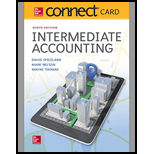
(1)
Ratio Analysis:
Ratio analysis is a tool to analyze the financial statements of a company which expresses a mathematical relationship among the items of financial statements.
To determine: The
(1)
Explanation of Solution
Current ratio:
Current ratio is a
Determine total current assets:
Determine total current liabilities:
Given,
The current ratio of HB Co. is 2.25.
(2)
The acid test ratio
(2)
Explanation of Solution
Acid - Test ratio:
Acid - test ratio or Quick ratio is a liquidity ratio, which displays how current liabilities are paid by the current assets excluding prepaid expenses and inventories. Acid - test ratio is used to measure the company’s immediate short term liquidity. Current assets include cash and cash equivalents, marketable securities and short term investments. Acid-test ratio can be calculated using the formula:
Determine total quick assets:
Determine total current liabilities:
Given,
The acid-test ratio of HB Co. is 1.375.
(3)
Debt equity ratio:
Debt equity ratio is a long term solvency ratio, which expresses the relationship between own funds (shareholders’ equity) and loan funds (debt). This ratio shows the proportion of debts and shareholders’ equity to finance assets. It is calculated by dividing the total liabilities by total shareholders’ equity.
To determine: The debt equity ratio
(3)
Explanation of Solution
Determine total liabilities:
Determine total shareholders’ equity:
The debt equity ratio of HB Co. is 0.65.
(4)
Times interest earned ratio:
Times interest earned ratio indicates the relationship between earnings before interest and tax (EBIT) and interest expense. The purpose of the ratio is to know the payment of interest expense with respect to the company’s earnings.
To determine: The times interest earned ratio.
(4)
Explanation of Solution
The times interest earned ratio of HB Co. is 7.5 times.
Want to see more full solutions like this?
Chapter 3 Solutions
Connect Access Card for Intermediate Accounting
- What is the result of this exchange?arrow_forwardprovide step by step solution for general accountingarrow_forwardPablo Foods Ltd. acquires all the outstanding stock of Northern Harvest Inc. for $15 million. The fair value of Northern Harvest's assets is $10.4 million, and the fair value of its liabilities is $2.1 million. Calculate the amount paid for goodwill.arrow_forward
- Need answer accurate please No AI i will rate unhelpful.arrow_forwardsolve thi q general accountingarrow_forwardCalculate the Operating Cash Flow (OCF) from the following data: • Change in net fixed assets: $18,000 • Change in net working capital: $22,000 Dividends Paid: $28,000 • Depreciation Expense: $32,000 . Interest Paid: $19,000 • Net New Borrowing: $14,000 • Net New Equity Issued: $9,000arrow_forward
- Hannah Brooks receives a travel allowance of $220 each week from her company for time away from home. If this allowance is taxable and she has a 25 percent income tax rate, what amount will she have to pay per year in taxes for this employee benefit? a. $5250 b. $5500 c. $2,860 d. $4880arrow_forwardPlease dont answer if you can't read the values in image . I will give unhelpful.arrow_forwarddear expert , dont answer if you cant understand values.Please comment i will write values . I will give unhelpful.arrow_forward

 AccountingAccountingISBN:9781337272094Author:WARREN, Carl S., Reeve, James M., Duchac, Jonathan E.Publisher:Cengage Learning,
AccountingAccountingISBN:9781337272094Author:WARREN, Carl S., Reeve, James M., Duchac, Jonathan E.Publisher:Cengage Learning, Accounting Information SystemsAccountingISBN:9781337619202Author:Hall, James A.Publisher:Cengage Learning,
Accounting Information SystemsAccountingISBN:9781337619202Author:Hall, James A.Publisher:Cengage Learning, Horngren's Cost Accounting: A Managerial Emphasis...AccountingISBN:9780134475585Author:Srikant M. Datar, Madhav V. RajanPublisher:PEARSON
Horngren's Cost Accounting: A Managerial Emphasis...AccountingISBN:9780134475585Author:Srikant M. Datar, Madhav V. RajanPublisher:PEARSON Intermediate AccountingAccountingISBN:9781259722660Author:J. David Spiceland, Mark W. Nelson, Wayne M ThomasPublisher:McGraw-Hill Education
Intermediate AccountingAccountingISBN:9781259722660Author:J. David Spiceland, Mark W. Nelson, Wayne M ThomasPublisher:McGraw-Hill Education Financial and Managerial AccountingAccountingISBN:9781259726705Author:John J Wild, Ken W. Shaw, Barbara Chiappetta Fundamental Accounting PrinciplesPublisher:McGraw-Hill Education
Financial and Managerial AccountingAccountingISBN:9781259726705Author:John J Wild, Ken W. Shaw, Barbara Chiappetta Fundamental Accounting PrinciplesPublisher:McGraw-Hill Education





